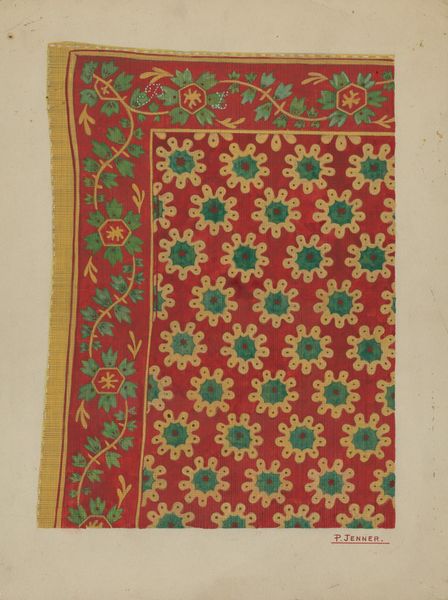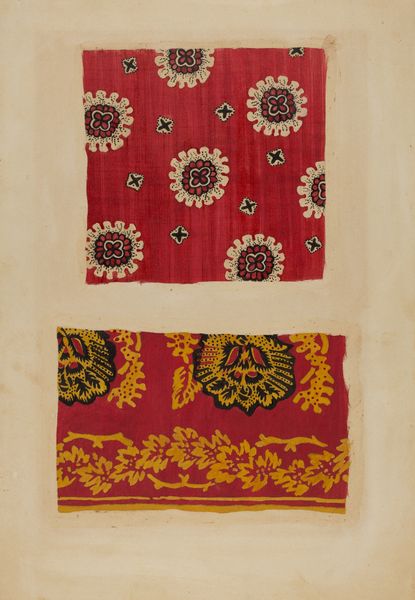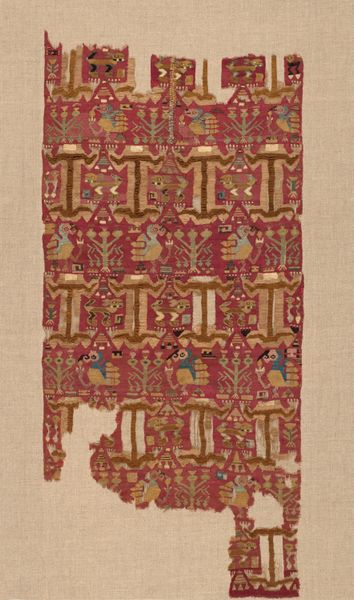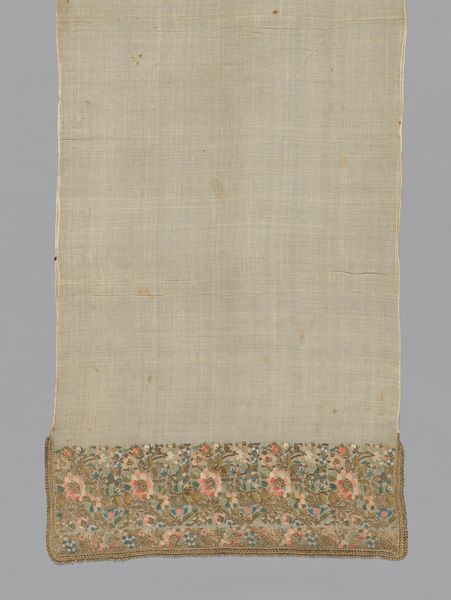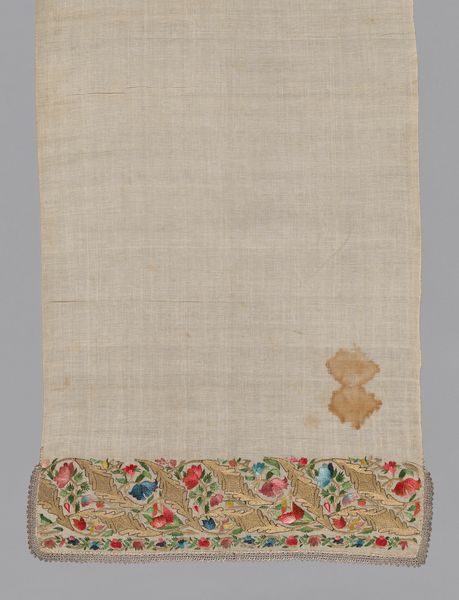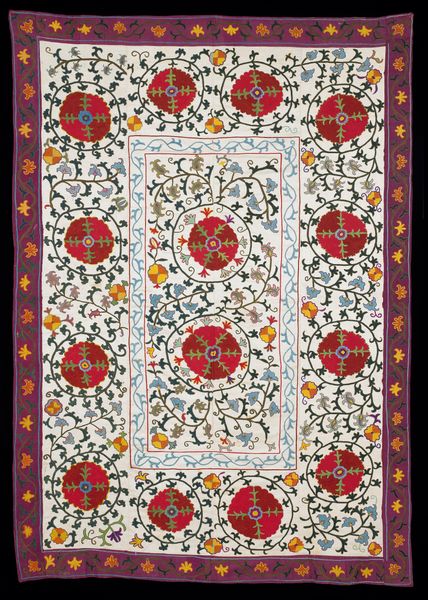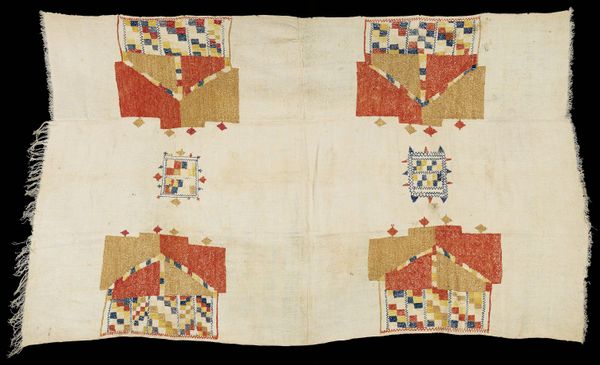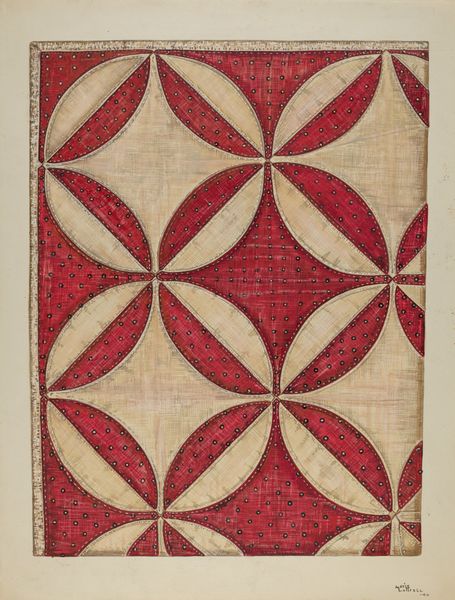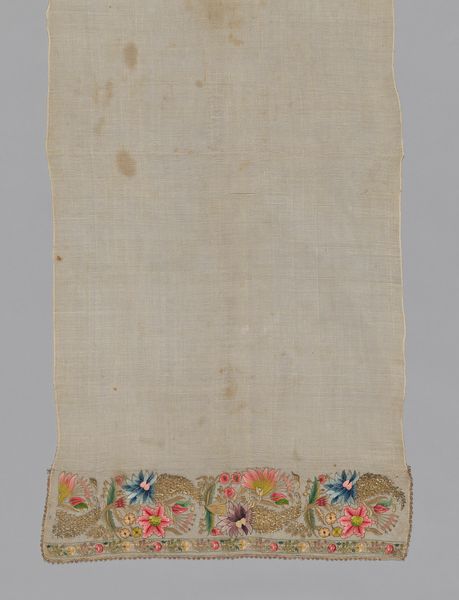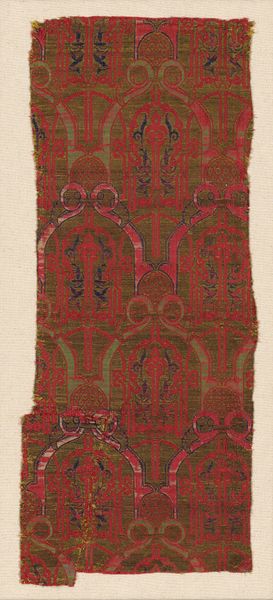
Fragment (from a Tunic) Roman period (30 B.C.– 641 A.D.)/Arab period (641–969), 6th/7th century
0:00
0:00
weaving, textile
#
weaving
#
textile
#
geometric
#
textile design
Dimensions: 64.8 × 95.9 cm (25 1/2 × 37 3/4 in.)
Copyright: Public Domain
Curator: Let’s turn our attention to this remarkable textile fragment, identified as originating from a tunic dating back to the Roman and Arab periods, specifically the 6th and 7th centuries. Editor: It has this understated, calming effect... The palette is muted, almost whispers of red and green on a creamy ground. Makes you want to touch it, even through the glass. Curator: Absolutely, and the artistry is deeply rooted in Coptic traditions. We see repeating stylized vegetal motifs— suggesting perhaps lotus flowers or abstracted palmettes – rendered with meticulous care. Notice the borders framing these vertical panels. Editor: I'm curious about the production of something like this. Was this something made in a workshop, or could this have been created by someone for personal use? Was it perhaps even bartered for something? Curator: A fantastic point! The consistent pattern suggests a degree of specialized skill, but it's within the realm of possibility that it was produced in a domestic setting as many homes had looms. Either way, someone poured their time into carefully selecting the yarns and precisely interlacing warp and weft, creating these resilient patterns. This wasn't a trivial task. Editor: The thing I love most about working with textiles, particularly those of ancient vintage like this one, is thinking about what that original labour might tell us. Here is someone weaving the hopes and beliefs of their day, threading bits of history through every colour choice. You know, I have to admit, though, seeing it here... preserved under glass… it’s sad in a way. A part of a whole divorced from its purpose. Curator: That fragmentation also echoes our fragmented understanding of the world it came from. We glimpse a bit of their art through this small segment and are inspired to reconstruct and imagine. Though this piece may now be held within the formal setting of a museum collection, its humble past and rich historical legacy endures in the threads.
Comments
No comments
Be the first to comment and join the conversation on the ultimate creative platform.
